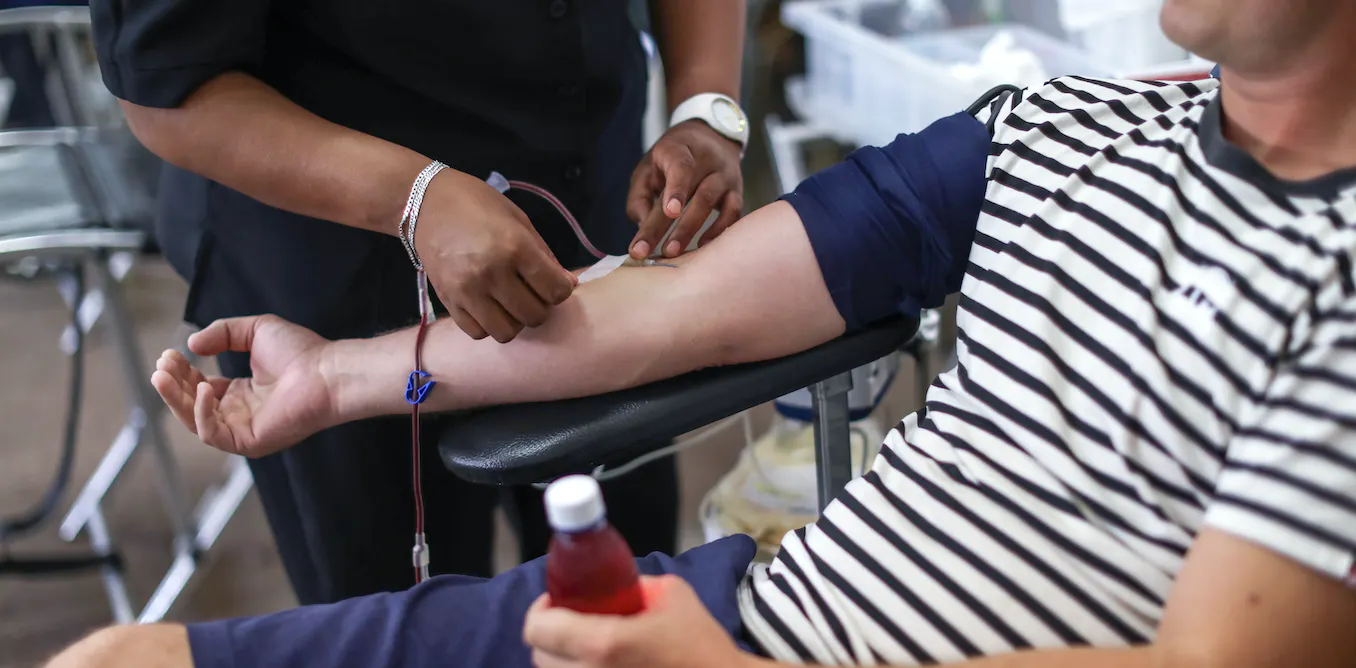Kody Kinsley, the Secretary of North Carolina’s Department of Health and Human Services, recalls his high school days of organizing blood drives to contribute to the US blood supply. However, due to regulations that barred most gay men from donating blood, Kinsley’s personal efforts were in vain. Now, a monumental shift is underway, marking a transformative moment in blood banking history that allows more gay men to contribute to this essential cause.
A Personal Journey Towards Inclusion
Kody Kinsley, who identifies as gay, eagerly anticipates the moment he can donate blood as an adult, breaking free from the restrictions that once hindered him. Reflecting on his experience, he emphasizes that the focus should be on behaviors rather than sexual orientation. The change is a victory over the stigma that has long surrounded gay men’s involvement in blood donation.
Shift Towards Inclusive Risk Assessment
The shift in policy is groundbreaking, as the Red Cross, a major blood provider in the US, adopts an inclusive risk-based individual assessment. Starting from Monday, the organization will assess eligibility for blood donation based on individual behavior, regardless of sexual orientation. This change is particularly significant given that the US Food and Drug Administration (FDA) had enforced restrictions on most gay men from donating blood for nearly four decades.
An End to Stigmatization
The impact of this policy shift is immense. It eliminates the unnecessary stigmatization of gay men who were deemed ineligible to donate blood even when they posed no threat to the blood supply. Instead, the new approach focuses on evaluating behavior-related risks rather than categorically excluding individuals based on their identity.
Historical Context: The HIV Epidemic
The roots of the previous policy can be traced back to the early days of the HIV epidemic, when the FDA instituted regulations based on the assumption that a majority of HIV infections were among gay or bisexual men. However, over time, advances in HIV screening technology allowed blood banks to better identify the virus, making the need for the older policy obsolete.
A Significant Milestone
In May 2022, the FDA finally updated its guidance to align with scientific understanding. This marked a significant turning point, where risk assessment is based on behavior rather than orientation. While the change is commendable, it’s acknowledged that further progress is needed to ensure a truly inclusive policy that accounts for the nuances of individual behavior.
Blood Banks’ Response and Implementation
In response to the updated guidance, blood centers across the United States are adapting their policies to embrace inclusivity. The timeline for these changes varies, with smaller centers adopting the new approach more swiftly. However, it’s essential for the transition to be executed sensitively, involving staff training to ensure a smooth and respectful implementation.
Continued Challenges
Despite this remarkable shift, some critics argue that the new policy doesn’t go far enough. The focus on behavioral risk assessment has its limitations, potentially excluding individuals who may engage in safe practices, such as using condoms or taking pre-exposure prophylaxis (PrEP). The policy’s framework must continue to evolve to account for advancements in medical and sexual health practices.
Advocacy for Further Change
While the updated policy is a step in the right direction, the journey towards complete inclusivity is ongoing. The Red Cross acknowledges that the current guidance is not perfect and that more work can be done. The goal is to gather more data and eliminate deferrals based on factors like PrEP and PEP usage, ensuring that everyone who is eligible has the opportunity to contribute.
Conclusion
The transformation in blood donation policy, allowing gay men to contribute without unnecessary restrictions, is a remarkable milestone in the battle against stigma. Kody Kinsley’s journey exemplifies the potential for change when outdated policies are reevaluated. This shift signifies a crucial step towards more inclusive practices, acknowledging the importance of individuals’ behaviors rather than their identities. As the blood banking system evolves to be more accommodating and understanding, the hope is that more eligible donors, regardless of sexual orientation, will step forward to support this vital cause.



